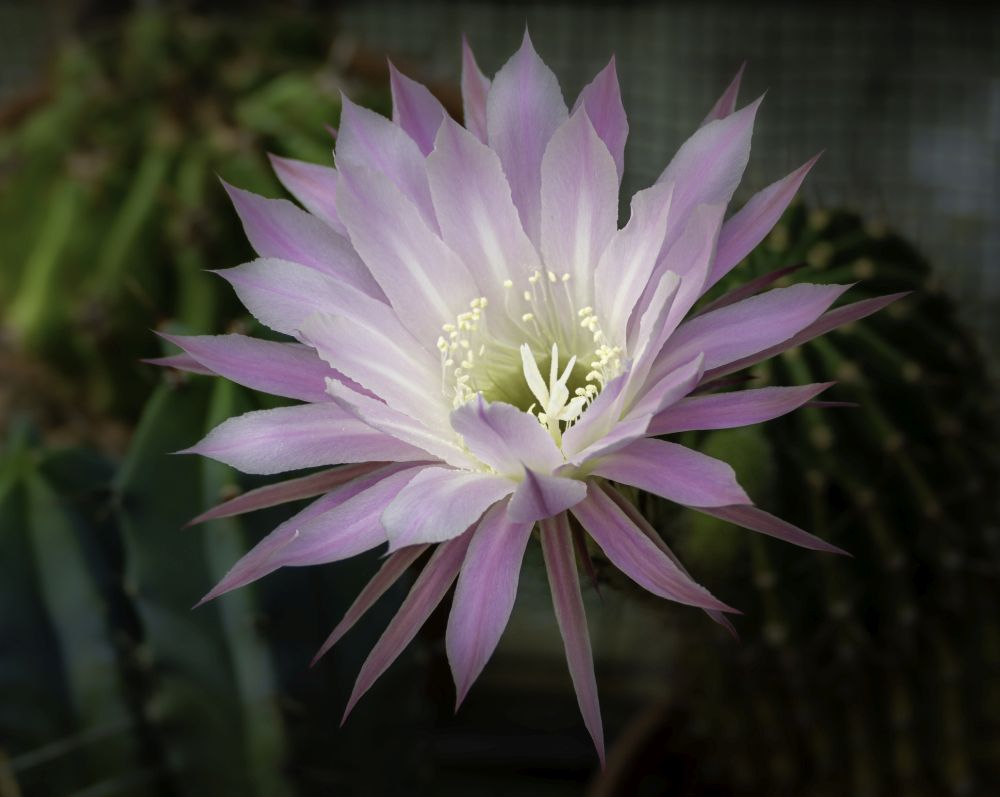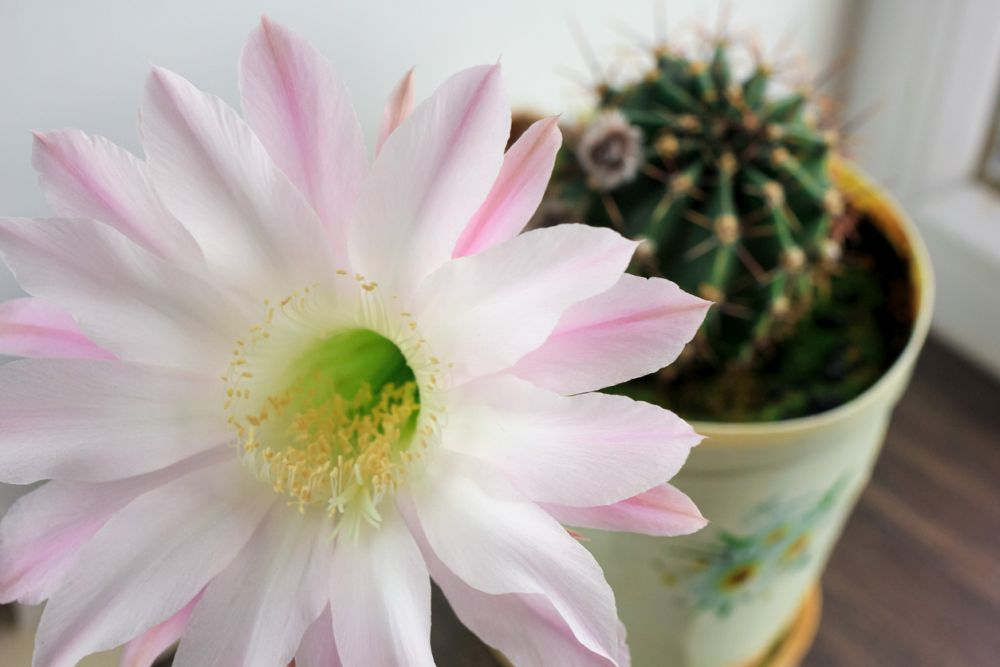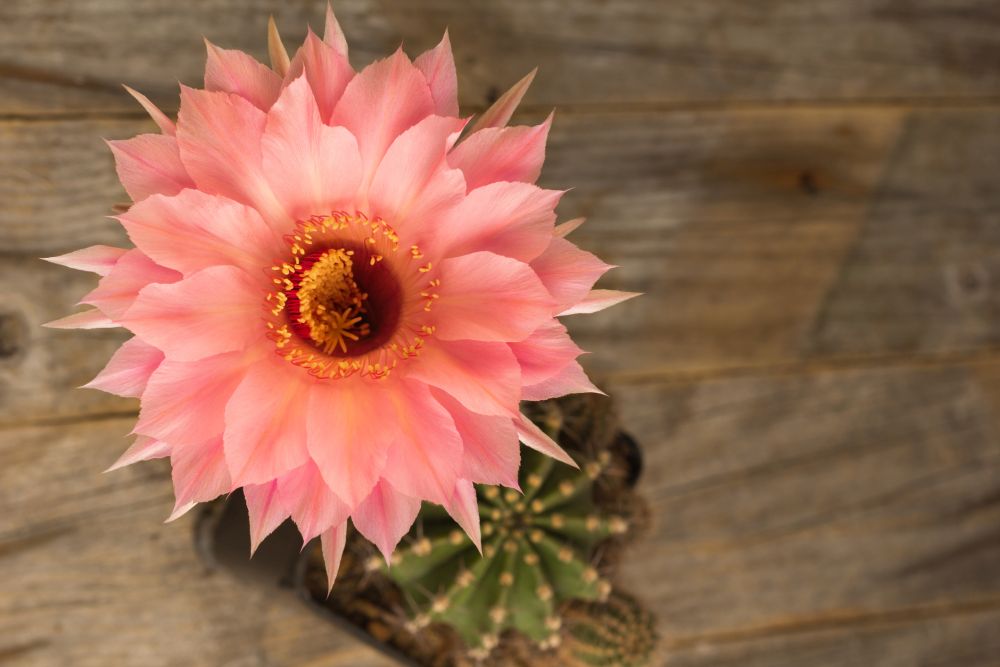How to Grow & Care for the Sea Urchin Cactus
Members of the Cactaceae family are at the heart of many cacti hobbyists, both adept and those at the beginner level. They seem to demand less as far as the growing requirements are concerned, and appeal to most homeowners due to their surpassing potential to bloom flowers with a distinct pattern.
If you’re growing a succulent, you won’t need to struggle much with dismaying conditions that mostly arise out of intense neglect. Read on to learn more about growing and caring for the Echinopsis cactus.
More About the Echinopsis Cactus
Native to South America, this genus belongs to the Cactaceae family and carries a peculiar aura you won’t find in other indoor cacti plants. Unlike other types in the same genus, it’s a petite houseplant with little to bargain for when it comes to nurturing needs.
With fetching spines and intense prospects to bloom flowers, this cactus type fits all the requirements you’d probably be looking for when looking for a plant that’s perfect for indoor cultivation. A few other common names attached to the Echinopsis cactus include:
- Sea Cactus
- Easter Lily Cactus
- Sea Urchin Cactus Hedgehog
- Sea Urchin
Growing this low-maintenance houseplant is a piece of cake. You only need to adhere to a few growing requirements to make your Sea Cactus grow up to 5” feet. It’s, however, worth noting that it’s more likely to reach this height when grown outside than indoors.
Echinopsis Cactus Caring Tips
Flowering & Fragrance
During the blooming season, your Sea Urchin cactus will produce a few white or pink flowers. Some other hybrid varieties in the Echinopsis genus will also bloom flowers alongside the thick stems that are tucked together to resemble a barrel. On average, you should expect the flower tubes to reach about 10” inches long.
Light & Temperature
Just like most other cacti types, this succulent does immensely well when grown under a dry and warm environment for the most part of its subsistence. But what sets this hybrid strikingly apart from the rest is it prefers indoor lighting and temperature conditions. Although it needs more bright light during the daytime, give your Sea Urchin cactus some shade to protect the leaves from getting sunburned.
Moving it outdoors should happen gradually so the cell walls can adapt to differing conditions. When the temperatures drop during winter, try to keep the room temperature range between 10 to 12 degrees Celsius. But what’s more engrossing is it can tolerate frosting temperatures as low as –7 degrees Celsius.
A south-facing window would provide your Sea Urchin cactus with the right set of lighting conditions and the longest period of time to access bright and direct sunlight, especially during winter. Your Urchin cactus needs the full sun when it’s winter and partial shade during summer. If you’re not fascinated by its capacity to bloom flowers, then you can grow this succulent under any environment.
To keep your cactus from getting sunburned, always inspect the leaves for any early signs of discoloration. Lessen its exposure to the sun if this condition prevails. If you’re looking to enhance the warmth and light during the night, you can make the best use of grow lights, but be careful not to disrupt its normal routine to absorb the daytime light.
It’s worth noting that the surroundings in which your Urchin succulent is growing need to match with the seasonal conditions of the southern hemisphere where it natively comes from. And to do that without faults, make your winter to be their summer by using grow lights. Inversely, make turn your summer to be their winter. When the growing season checks in, your Urchin Cactus will bloom ideally under temperatures ranging between 15 to 20 degrees Celsius.
Soil & Transplanting
For a houseplant that stores its own water to survive through the dry months, the best way to go about the soil conditions is using a mixture that drains water a bit faster than normal potting soil. The cell walls of the leaves tend to burst after absorbing excess moisture. Your cactus would also have to have to struggle with root rot, causing it to die in the long run.
To keep such a mishap from happening, you need to use a commercial cactus mix, or prepare a potting mix, ideally for succulents. To make the perfect DIY potting mix with a porous texture that would help with the drainage, add a layer of pebbles and sand to standard potting soil. I usually make potting soil for my newly propagated succulents by mixing tree barks with peat moss and perlite or vermiculite.
Whichever method you find fitting for your Urchin cactus, it’s best to consider its drainage needs and use a growing pot with enough drainage holes that will let out any excess moisture after watering. You’ll need to transplant your cactus as soon as it outgrows its initial container, preferably during a warm season.
Spring sets out the most impeccable conditions for transplanting since parts on your Sea Urchin that get damaged during the exercise will heal much faster when the growth hormones have paced out their dormancy period. Use a natural antifungal remedy such as baking soda to treat any injuries that occur during transplanting.
Get rid of any roots that appear dead or are decaying before planting this succulent into its new growing medium. Replace the old soil to replenish the essential nutrients. Wait for a week to lapse then begin to water it gently so you don’t expose your Urchin cactus to early root rot. Wear protective during the whole exercise to avoid getting pricked by its thick spines.
Watering & Feeding
While drainage is essential for the well-being of this succulent plant, the most prevailing pointer to keep in mind is it doesn’t need to be watered heavily and at close-range intervals—they need to be spaced out. Give the soil some grace period to dry out completely before watering your Urchin cactus again.
Use the soak and dry method —it tends to work perfectly on all my succulents, so you want to soak the soil thoroughly and evenly then wait till it totally dries up. During winter, reduce the number of times you water your Urchin cactus by a significant margin.
Sprinkle some water using a misting bottle around this season just to keep the leaves from losing their vibrance. To feed it with the essential nutrients it needs, you’ll need to wait for the growing season to come by. And based on the yield quality succulents have managed to garner, I’d wholeheartedly recommend using a fertilizer that’s solely tailored for cacti plants.
Even though it’s much preferred to use a balanced fertilizer, one that’s densely rich in phosphorous and potassium would suffice. Phosphorus helps with blooming while potassium allows your Echinopsis cactus to actively complete the photosynthesis process. After growing or transplanting this succulent, it won’t necessarily need fertilizer for, say, the next coming year.
Grooming & Maintenance
Same as the cosmic number of other succulent houseplants, the Echinopsis cactus comes with fewer maintenance needs. But if left unattended for longer periods, the base part will become bushy due to the offsets that fall off and grow, so you’ll need to get rid of them once they begin to develop. Apart from this less strenuous exercise, you want to avoid overwatering at all costs. Wait till you begin to see some slight wilting of the leaves so you can water your cactus again. As petite and hardy as it might look, don’t let your cactus sit in drenched soil.
Common Pests & Diseases
What’s mind-blowing about owning this succulent is it’s not only drought-tolerant but also doesn’t attract the pests and diseases which most houseplants are prone to. If you spot yellow or brown patches on your cactus, then that could be a sign of overwatering. Check the roots when transplanting your Sea cactus to make sure they’re not suffering from any pest attacks or overwatering-related diseases.
Rub alcohol on areas that appear to be affected by attacks from spider mites and scale insects. And while doing so, make sure to keep your plant from excess sun rays. Phototoxicity can affect your cacti’s skin when exposed to the sun after getting into contact with alcohol. To get rid of a massive infestation, you can replace the old soil with one that’s disinfected.
You can do that by heating the soil in the microwave for about 30 minutes under temperatures ranging between 82-93 degrees Celsius. While rotting is a common problem mostly caused by fungi or bad bacteria amongst many cacti plants, the foremost thing to do when the temperatures are frosting is to provide your Sea cactus with a resting period. It won’t need any feeding or regular watering around this time.
How to Propagate Your Urchin Cactus Plant
After a few DIY trials, I found using offsets to be the most productive method when it comes to propagating this Echinopsis species. They mostly grow on the edges of the growing medium after falling off from the mother plant. To carry out the propagation exercise, you’ll first need to wet the soil before uprooting the offsets. It helps avoid damaging the fragile root hairs on the offsets.
There could still be chances where offsets get injured during the whole uprooting process, so keep them outside to give the wounds some time to heal. After, say, a week, move them to their individual growing pots and don’t miss to use the soil requirements we hinted out earlier in this guide. Keep the growing medium in a warm environment and fairly moist.


